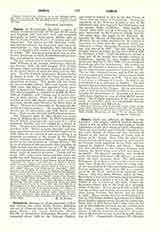

Samos, titular see, suffragan of Rhodes in the Cyclades. The island, called in Turkish Soussan-Adassi, is 181 sq. miles in area and numbers 55,000 inhabitants, nearly all of whom are Greek schismatics. There are nevertheless some Catholics dependent on the Latin Bishop of Chios and two convents of Fathers of the African Missions of Lyons and of Sisters of St. Joseph. Since 1832 the island has constituted an autonomous principality, governed by an Ottoman Greek appointed by the Porte and recognized by England, France, and Russia. Samos was first inhabited by the Leleges, Carians, and Ionians, the latter being very active and given to navigation. Its greatest prosperity was attained under the tyrant Polycrates (536-522 B.c.) at whose court the poet Anacreon lived. The philosopher Pythagoras (b. at Samos) seems to have lived at the same time; Aesop also stayed there for a long time. At the assassination of Polycrates Samos passed under Persian domination, and, about 439 B.C., participated in the Greek confederation especially with Athens. This city, under Pericles, took it by force. Henceforth it had various fortunes, until the Romans, after pillaging it, annexed it in A.D. 70. It was included in the Province of the Isles. Under the Byzantines Samos was at the head of a maritime theme or district. It was captured and occupied in turn by Arabian and Turkish adventurers, the Venetians, Pisans, Genoese, and Greeks, and the Turks in 1453. These various masters so depopulated it that in 1550 Sultan Soliman had transported thither Greek families, whence sprang the present population. From 1821 to 1824 Samos had a large share in the war of independence and won several victories over the Turks. Among its bishops Le Quien (Oriens Christ., I, 929-32) mentions: Isidore I, at the beginning of the seventh century; Isidore II, in 692; Heraclius, in 787. Stamatriades (Samiaca, IV, 169-255) gives a fuller list including two aged bishops, Anastasius and George. St. Sabinianus, b. at Samos and martyred under Aurelian, is venerated on January 29, at Troyes in Champagne; there is also a St. Leo, d. at Samos, venerated on April 29, but he seems very legendary. At first a suffragan of Rhodes, Samos was an autocephalous archdiocese in 1730; in 1855 it was a metropolitan see as at present, dependent on the Greek Patriarch of Constantinople. In I Mach., XV,23 the Roman senate makes known to Samos (Samus) the decree favorable to the Jews. St. Paul stayed there for a short time (Acts, XX, 15).
S. VAILHE

